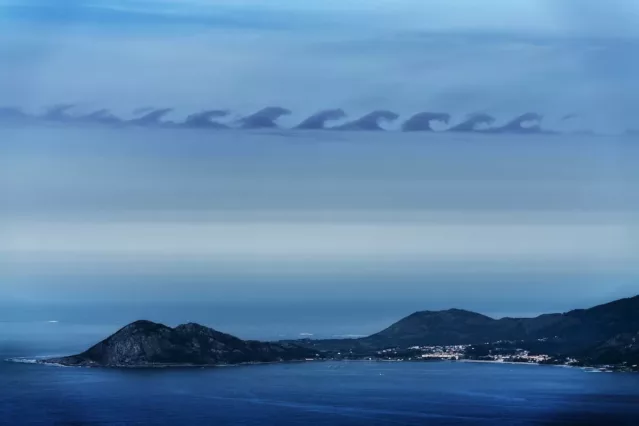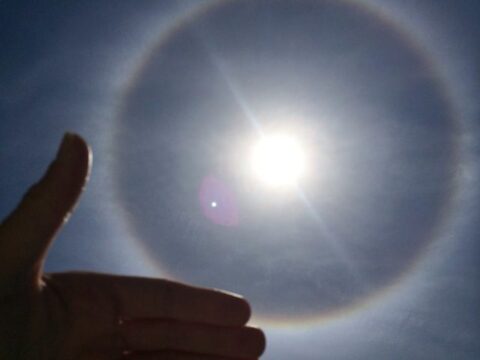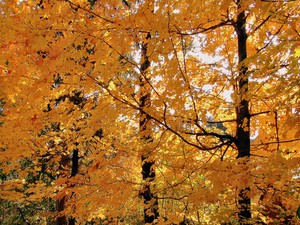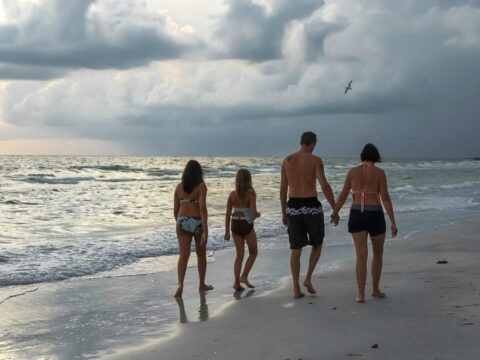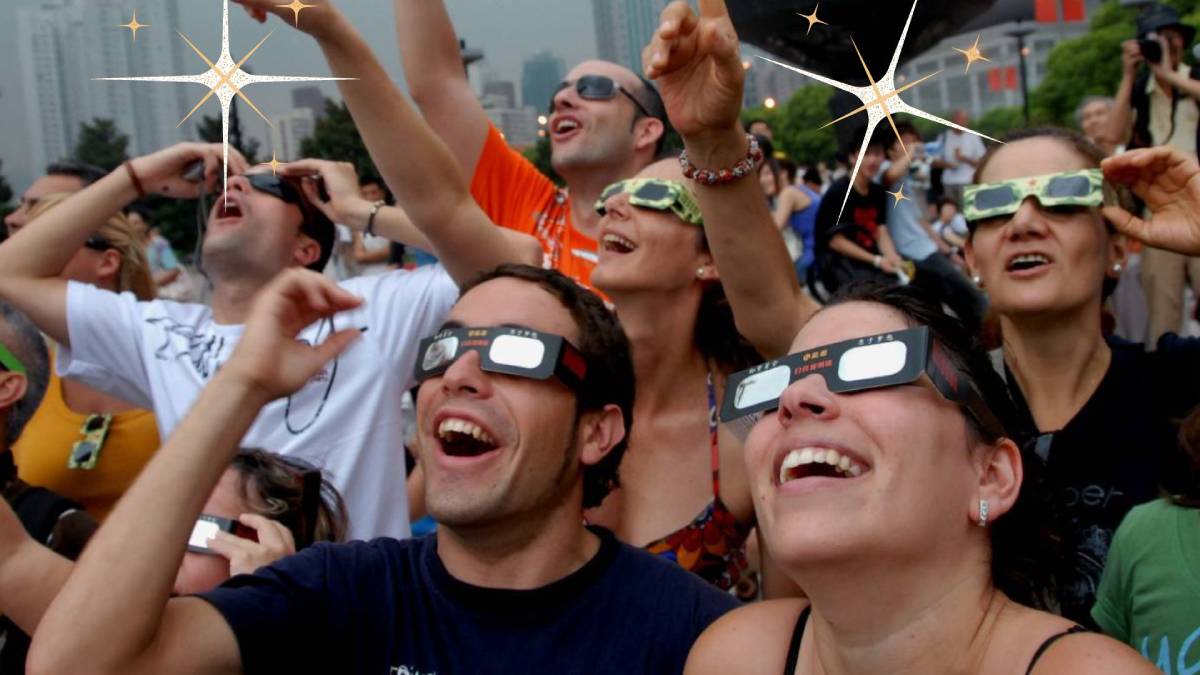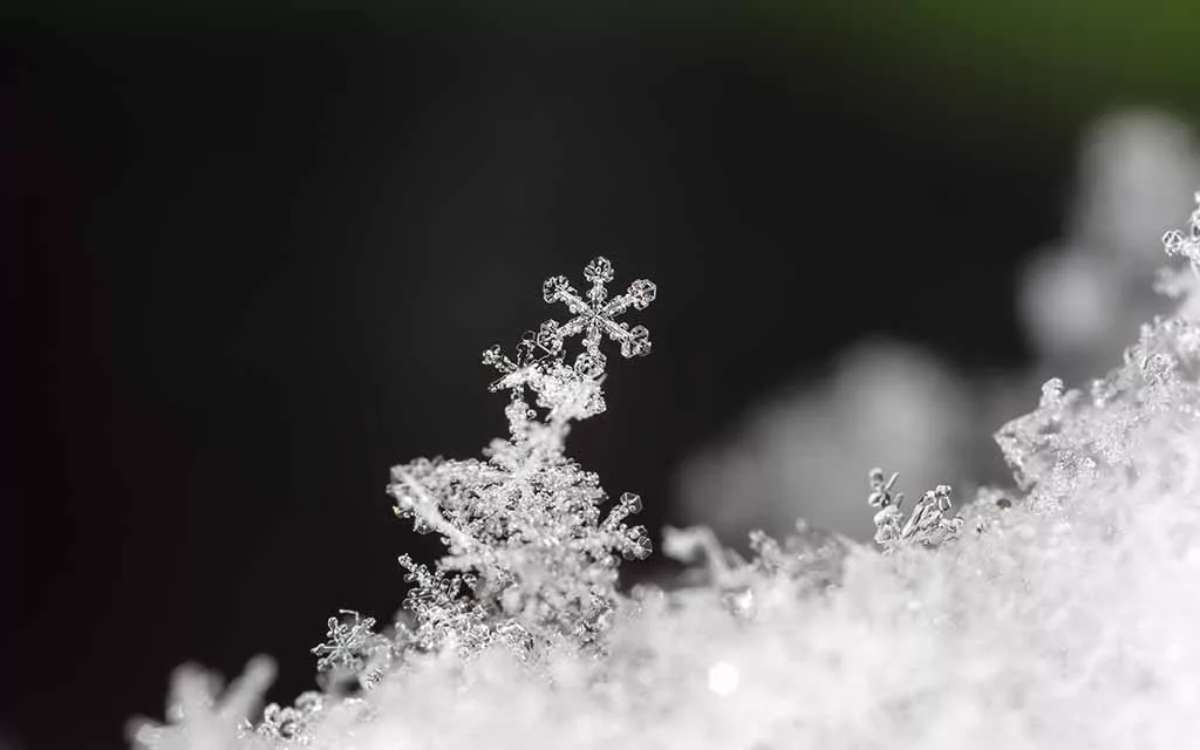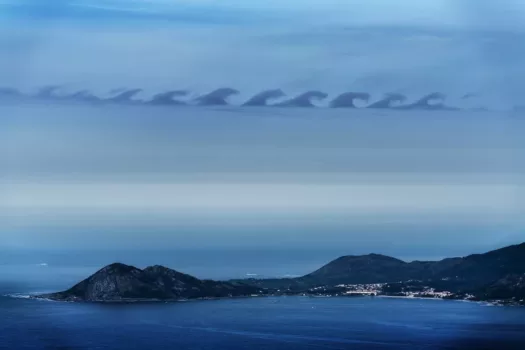
Some of the neatest cloud formations I’ve ever seen are wave clouds, or Kelvin-Helmholtz clouds.
They were discovered by their namesake cloud observers Lord Kelvin and Hermann von Helmholtz in the 1800s.
These unique and rare cloud formations — which are also known as KH clouds, KH wave clouds, shear-gravity clouds, and billow clouds — take the shape of breaking ocean waves as if seen from their side.
They’re fascinating to look at!
You’re probably wondering, “How do Kelvin Helmholtz clouds form?” and “Why do wave clouds form?”
How Other Clouds Form
Before going into how wave clouds form, we should first cover how clouds form in general.
Clouds are essentially just condensed water droplets or ice crystals. They form when invisible water vapor condenses in saturated air. That is… air that cannot hold any more water in vapor form, thus it converts water into solid or liquid forms.
Clouds take many forms, and they are classified into types — based on their appearance and where and how they form in the lower atmosphere.
There are 3 major cloud forms that scientist Luke Howard categorized in 1803:
- Stratus Clouds
- Cumulus Clouds
- Cirrus Clouds
NOTE: When you see “nimbus” in a cloud type, it means that it is a precipitating cloud (one that produces rain, snow, or other forms of precipitation).
All of this breaks down into 3 basic categories of clouds that are broken down into 10 main cloud types:
- High Clouds (base at 20,000 feet or higher) — Cirrus, cirrostratus, and cirrocumulus
- Medium Clouds (base from 6,500 feet to 20,000 feet) — Altostratus and altocumulus
- Low Clouds (base below 6,500 feet) — Stratus, stratocumulus, nimbostratus, cumulus, and cumulonimbus
So, what type of cloud is a Kelvin-Helmholtz wave cloud?
Kelvin-Helmholtz waves are known as a fluctus feature. These waveform clouds can occur at various levels and are known to exist among 5 cloud types:
- Cirrus
- Altocumulus
- Cumulus
- Stratus
- Stratocumulus
How (And Why) Kelvin-Helmholtz Wave Clouds Form
To understand how Kelvin-Helmholtz clouds form, you must remember that the atmosphere isn’t just a void filled with air. It’s really more like an ocean — with various levels and currents all flowing along with and sometimes against each other.
Kelvin-Helmholtz wave clouds occur where there is instability in the air that is moving at two different velocities.
One of the most common ways a wave cloud may form is when warm air is flowing over cool air.
A cloud floating in this confluence of air currents may adopt the Kelvin-Helmholtz waveform when the upper stream of air is moving more quickly than the lower stream. The upper air currents will essentially blow over the tops of the cloud tops, creating the characteristic waves that make Kelvin Helmholtz clouds, shear-gravity clouds, or billow clouds so distinctive.
When (And Where) To See Wave Clouds
I’m a weather bug, so I’ve always got my eyes on the sky.
I’ve been fortunate to see Kelvin-Helmholtz clouds a few times so far. Every time I’ve seen them, it’s been in the early morning — just after a cold front has passed through my area.
While these wave clouds are pretty rare, the most likely instance during which you might see this incredible cloud formation is on a windy day — right around sunrise or sunset.
Because KH clouds need to be seen from their side and at a fair distance… to really view their distinctive waveform profile, it’s best to be looking for these clouds near the ocean, in a meadow, or any other place where tall trees and buildings won’t obscure your view.
In the instances where I have seen wave clouds, it’s always been while driving over causeways across vast stretches of water, at the beach, on highways in open country, and at elevations significantly above surrounding buildings and trees.
As a cloud spotter, I usually do my best viewing in places away from the city. My favorite places to view clouds are at the or near the beach and in the countryside.
Why Wave Clouds Are So Special
Kelvin-Helmholtz clouds are rare — and that, in itself, makes them really cool!
These clouds are a favorite of mine, and they’re certainly a fairly difficult kind of cloud to check off the cloud-spotting inventory list.
But there’s so much more to billow clouds that make them so neat…
Their unusual form is inspiring to look at. I enjoy wave clouds because they’re so distinctive from other clouds in the sky. They remind me that the atmosphere is indeed not just a big vacuum, but rather like a big ocean… and we are at the bottom of it!
I’m not alone in thinking shear-gravity clouds are fascinating to look at. Some believe they inspired artist Vincent Van Gogh’s famous Starry Night painting:
What might a wave cloud inspire you to create?
As a writer and person who loves meteorology, they’ve roused me to share my knowledge about this amazing sky phenomenon with you.
I hope you get the chance to see Kelvin-Helmholtz wave clouds someday. You’ll never forget where you were and what you were doing when you saw them!
I'm a weather geek from Florida who's been studying meteorology and watching weather patterns for years! I enjoy sharing little-known facts and fun stuff about the weather. I especially like sharing interesting details about weather events and conditions that can affect you… and how to prepare for Mother Nature's ever-changing weather patterns.
